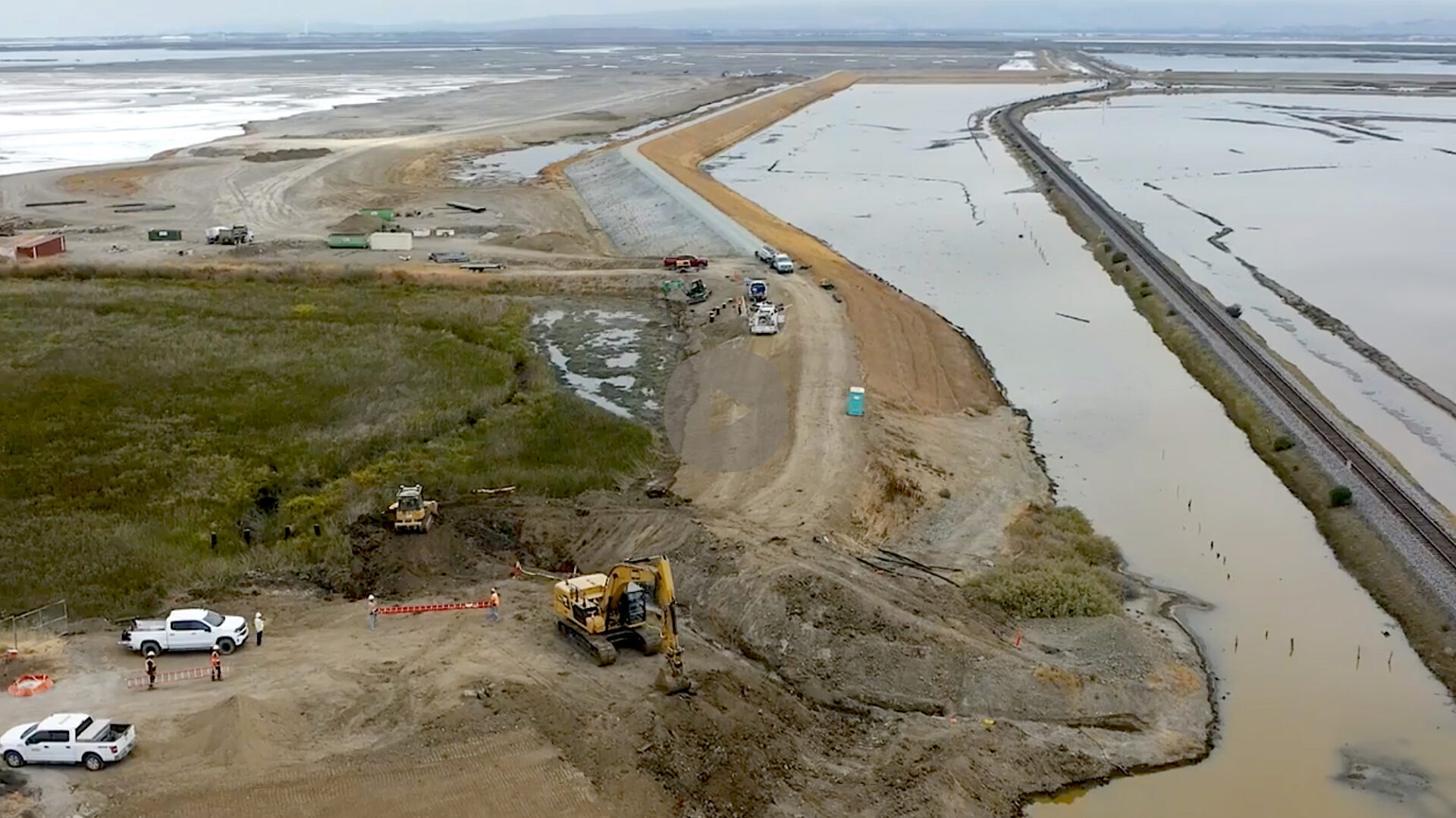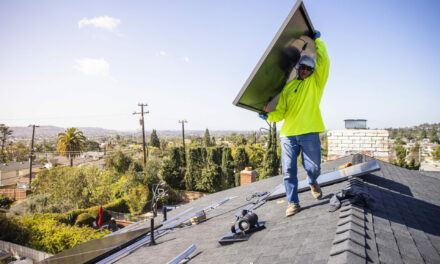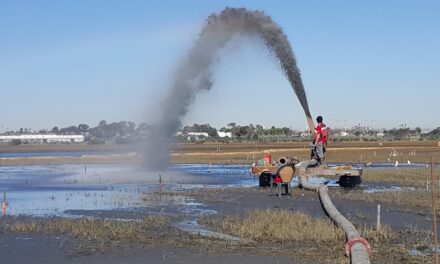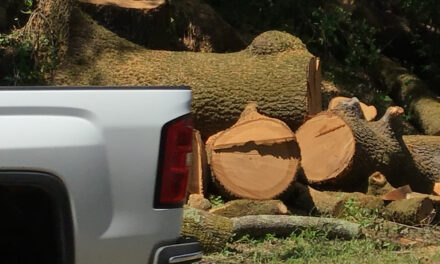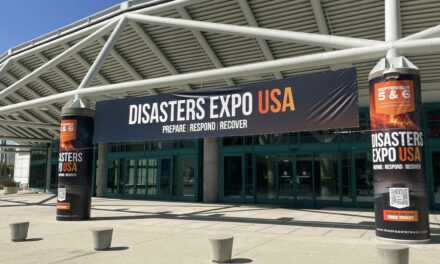King Kong Levee: Two Miles Done, Two To Go
Compared to the myriad mini-levees planned around the Bay in 2025, the South Bay’s growing shoreline levee stands out for its sheer scale and engineering.
This is no mere mound of dirt, like the 19th century earthworks still keeping the Bay out of pastures and local salt ponds, nor an experiment in how to use wastewater to irrigate new gray-green levees and filter out nutrients while protecting sewage treatment plants from sea level rise.
These two miles of 15-foot-tall, 16-foot-wide-at-the-top levee are of the more traditional Army Corps, FEMA-approved style: a major, multi-benefit flood control project designed to protect the oft-water-logged town of Alviso and parts of San Jose. This September marked completion of Phase 1 after 20 years in planning, development, and construction. The entire project, which will stretch from Alviso Slough to Coyote Creek, is expected to be completed by 2035 (provided additional funding is forthcoming).
Richard Santos grew up in the tiny fishing town of Alviso and remembers the floods in the 1960s, ’80s, and 1995. “It wasn’t just the water, but the damage and fear they brought. This project is more than infrastructure; it’s an important step toward peace of mind, safety, and confidence for our community,” says the Valley Water board director.
“As extreme weather and climate change-related emergencies increase in frequency, I am glad to see these life-saving protections for San Jose residents completed,” says Rep. Zoe Lofgren (CA-18).
To date, the $545 million project has required complex collaborations among local jurisdictions and partners (Valley Water, the Army Corps of Engineers, the California Coastal Conservancy, the Don Edwards National Wildlife Refuge, the city of San Jose, a railroad, the local parks district, and more). Eventually, the project will also enable the restoration of almost 3,000 acres of tidal wetlands on former salt ponds and completion of the Bay Trail through the area.
More importantly, it offers a tangible on-the-ground reminder of the scale of project necessary in the future as the region looks to protect airports, urban waterfronts, bridge touch-downs, and shoreline freeways from the steady rise of the Bay due to global warming.
“No project on the San Francisco Bay shoreline is easy,” says the Conservancy’s Amy Hutzel. “It’s always a complicated mix of jurisdictions and landowners and utilities, infrastructure and communities, all with lots of different needs. The Shoreline Project, I think, is a really great model of what we can do here.”
Next steps include constructing and revegetatating an ecotone along the levee, which will provide habitat for wildlife, and completing the remaining two miles of levee.
Other Recent Posts
Who Will Inherit the Estuary? Training for a Rough Future
The six-month program teaches students aged 17 -24 about the challenges facing communities around the SF Estuary, from Stockton to East Palo Alto.
Split Verdict Over State of the Estuary
Habitat restoration and pollution regulations are holding the Bay steady, but the Delta is losing some of its ecological diversity, says SF Estuary Partnership scorecard.
Volunteers Catch and Release Tiny Owls For Science
In Santa Rosa, citizen scientists capture northern saw-whet owls to help further research on climate impacts to the bird.
Antioch Desalination Plant Could Boost Local Water Supply
The $120 million plant opened this fall and treats 8 million gallons of brackish water a day, 75% of which is drinkable.
How Cities Can Make AI Infrastructure Green
Data centers fueling AI can suck up massive amounts of energy, water and land, but local policies can mitigate the impact.
What to Know about PFAS in Tri-Valley Water
In this nonfiction comic, explore how the city of Pleasanton is dealing with PFAS- contaminated groundwater.
ReaderBoard
Once a month we share reader announcements: jobs, events, reports, and more.
MORE
- Delivering Tunnel Muck to South Bay Marshes, August 2024
- A South Bay Levee Breaks Ground, April 2022






